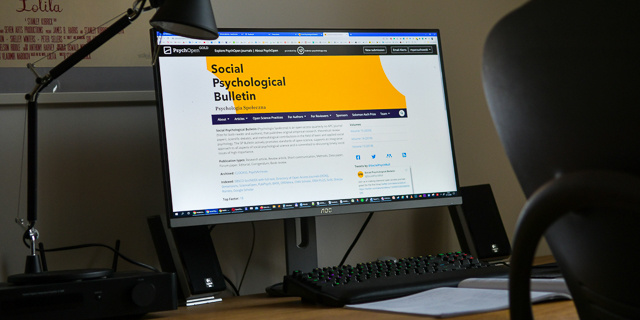There’s no doubt that 2021 presented some serious challenges for the vast majority of people around the world. As we continued to battle through the COVID-19 pandemic, businesses were also faced with a host of other challenges, from cyber attacks and extreme weather events, to business interruptions due to staff shortages and disruptions to the supply chain.
Understandably, these issues remain firmly front of mind, as we look ahead to another year of uncertainty. For organisations of all shapes and sizes, effective risk management is critical to prepare for what lies ahead.
The Allianz Risk Barometer is an annual report discussing the most important global risks for the next 12 months and beyond. Based on the insights of 2650 risk management experts from 89 countries, it provides valuable insight on the burning issues of businesses both here in Australia, and across the world.
So, to assist with your risk management planning, let’s take a look at the key takeaways from the 11th Allianz Risk Barometer report for businesses in Australia.
Risk #1 (equal): Business interruption
The top placed risk in the eyes of risk managers in Australia, was in fact shared by business interruption and cyber incidents, with each topping the list for 41% of respondents. Globally, business interruption ranked second, demonstrating the worldwide concern of the ongoing issues that continue to disrupt the ability of business everywhere to deliver the products and services they rely on for their livelihood.
It’s rare to find an industry that has not been impacted by at least some of the many forces that are interrupting business currently. There has been severe disruptions to the supply chain, staff absenteeism has been at unprecedented levels due to illness and isolation requirements, and in some locations, severe weather events such as storms, fire and flood have wreaked havoc. On top of this, cyber attacks have increased in prevalence, as our shift towards digital and remote work continues to increase.
So what can be done? The ongoing disruptions have heightened awareness around the need to build resilience and protective measures into risk management strategies. Specialised business continuity software allows you to more easily create processes and plans to minimise the risk of disruption. Having data and systems in place that can show the impacts and their costs, allows for greater transparency and provides a solid foundation for proactive measures to be put in place. What is clear is that we can no longer take things for granted and must be prepared for anything.
Risk #1 (equal): Cyber incidents
Concerns around cyber incidents have escalated, and it is currently the highest ranked issue for risk managers here, and across the world. There were some high-profile ransomware attacks and breaches of privacy last year, which put cyber security well and truly in the spotlight and in the process raised the level of anxiety around cyber attacks and how they can be mitigated.
The increase in frequency of attacks is happening alongside the continued rise in our reliance on technology to manage and run our businesses at every level. The effect of the pandemic has fast-tracked the shift to online and remote working for many organisations. As a result, the urgency of implementation has at times led to lag in the security and risk minimisation processes required to provide systems with an adequate level of protection from attacks.
So what can be done? Cyber criminals are becoming bolder and more prevalent, so arming your organisation with the highest levels of protection is more important than ever. There are many ways to protect your business from cyber threats, from installing security software and encrypting your data, to training your staff on threats and enabling two-factor authentication. Being proactive with your cyber hygiene and acting now, can help you avoid a potential disaster.
Risk #3: Climate change
With extreme weather events causing major devastation and disruption across the globe, the risks to businesses from climate change are being felt more intensely than ever. Alongside the increasing occurrence of natural catastrophes like 100-year storms, bushfires and floods, businesses are also under growing pressure to act on climate change and provide real and tangible commitments to reduce greenhouse gas emissions and make the switch to sustainable products and practices.
While climate change ranks sixth in the global rankings, it has jumped into the top three in Australia, surpassing other major risks to business such as the pandemic outbreak and changes in legislation, which sat at number one and three in last year’s rankings respectively. This demonstrates the shift in focus from risk managers across a range of industries who are seeing the signs that the window of opportunity to prepare and act to make their business more robust in the face of climate change may not be open forever. There has also been an increase in litigation, which has in turn been a driving force in behavioural change. This was illustrated in November 2020, when a case against a large Australian superannuation fund was settled, after it was claimed their failure to disclose and address climate risk breached legislation. As a result, the fund has now committed to changes to their disclosure and climate-change initiatives.
So what can be done? All organisations should be aware of their legal obligations in relation to the impact their business has on the environment. Beyond this, shareholders and members of the public are increasingly looking for transparency and meaningful climate and environmental policies. Environmental management software offers a simple way to minimise liabilities and maximise resources to demonstrate good corporate citizenship.
Understand your key risks and act now
While there is a continued uncertainty and anxiety about how the next 12 months will play out, we are also reaching a greater level of acceptance of the circumstances and a deeper understanding of what we can and can’t control.
Proactive planning and implementation of risk management processes is one thing you can do now, to position your business strongly to ride the waves that will certainly be with us through 2022. This is not the year to leave risk management to chance—talk to your team and expert advisors about the things you can do to protect your business today.
Risk management software can help you protect your business from the multitude of issues that we are currently facing. To find out more, contact our team for expert advice.






Comments